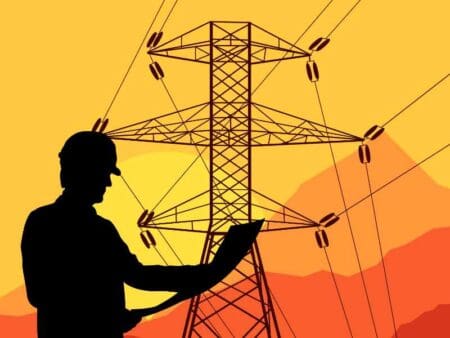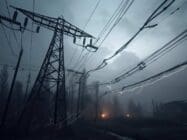
Andrew Maximow of US aerial data analytics company Zeitview, writes on the immense task of modernising the transmission and distribution power grids and how automated inspections might provide some much needed support.
Electric utilities are being asked to do what may seem like the impossible. They need to rapidly modernise to accommodate the transition to renewables and two-way power flow. They have to improve the reliability of a rickety grid, a lot of which is past its prime.
They must make both new and old infrastructure resilient to climate change disruptions to head off more frequent outages and catastrophic fires and regulators and customers want all this without big rate hikes.
No one solution can resolve all these challenges. But inspection automation is certain to play a part. It can help with modernisation, reliability and resilience while being a net positive in terms of cost. The latest T&D inspection technology can transform operations.
It partially automates everything from new power line siting to diagnosing problems on existing equipment. It leverages the power of AI to alert managers before a transformer blows or check a pole that’s way overdue for replacement. The data it collects provides the agility, visibility and deep insight organisations need to move from reactive to predictive maintenance.
T&D inspection at the speed of flight
Advanced inspection can be used to monitor for all sorts of maintenance issues in transmission power line structures. The process begins with a drone or crewed aircraft equipped with a combination of data capture technologies: thermal sensing, computer vision, high-definition photography and geo-positioning flying over the T&D line. At the speed of flight, the aircraft collects images and heat data along the entire line.
This creates a wealth of data: visual, thermal and geospatial. Depending on the length of a T&D line, this can mean millions of images. That’s where AI automation comes in. An AI-driven platform can automatically upload, tag, organise and analyse multiple data types and sources. It can sort through imagery rapidly, flagging only those images that show suspected anomalies or vegetation problems, with detail down to a few millimeters.
Read more here:
AI to fundamentally change current systems in the energy sector – experts
Hitachi Energy and Google Cloud partner on AI data analytics
Technicians review only these instead of combing through a drop box full of images that all look so similar that it’s easy to miss something. Though the full record of images is there in case a need arises. What was a manual job that previously took field techs and linemen months is done in a fraction of the time.
An AI platform can then provide specific recommendations on repairs or vegetation management, prioritising those that need immediate attention. More than that, the O&M team gets a GIS-true, 3D visualisation of the entire line with a timestamped record for each pole: location, asset health, defect type, severity of problems and state of vegetation. It’s a complete record of the assets at one moment in time, providing baseline data that allows managers to move from reactive or scheduled maintenance to predictive maintenance. Failures are tracked over time, and AI determines what needs repair or an upgrade before it can cause a power disruption.
Precision inspections for distribution poles
The US’s 160 to 180 million power distribution poles are a weak link in our electric power system. They are increasingly vulnerable to more frequent and intense hurricanes, winter bomb cyclones, atmospheric rivers, drought, fires and high temperatures. One study examining two major East Coast cities found that accelerated wood decay from a harsher environment can increase total maintenance cost for these poles to between 6% and 8%, based on standard utility practices and how much temperatures climb.
By examining the full height of poles, advanced inspections using drones can improve the insights collected during traditional wood pole inspections. Without a bucket truck, O&M teams can:
- Detect unusual heat signatures not likely to be caught by visual RGB sensors and ground inspection crews.
- Check the full height of poles and cross-arms and photo-document all kinds of issues: the extent of insect infestation, rot from moisture, rodent chewing, woodpecker holes, damage from fire charring or lightning strikes and large knots and horizontal cracks that may weaken the pole.
- Look at poles from above to see split tops.
- Find failed lightning arrestors.
- Document and assess burn marks from transformer failures or conductor faults.
- Detect failed fused switches on capacitor banks or overhead fused disconnects.
- Assess whether hardware at heights needs tightening due to pole shrinkage.
- Identify damaged or missing insulators or brackets and fraying guy wires and support cables.
- Plus, pinpointing when to replace or reinforce poles to meet the National Electrical Safety Code (NESC) has a significant upside. Companies that nail this interval with precision can optimise their maintenance budgets.
How to capitalise on funding to adopt advanced inspection technology
In the last network-infrastructure review, the US Department of Energy found that approximately 70% of the US grid’s transmission lines are over 25 years old, and the average age of large power transformers, which handle 90% of the nation’s electricity flow, is more than 40 years. Some of our country’s electricity networks are over a century old and most distribution poles have been in the ground for 50 or more years, past their expected useful life.
This reality poses economic and security threats. The federal government responded in 2022 with a five-year grant program providing over $450 million annually to states and tribal nations to improve grid resilience and prevent disruptions. Qualifying projects under the Bipartisan Infrastructure Bill include:
- Utility pole upkeep and removal of trees and other vegetation affecting grid performance.
- Undergrounding electrical equipment.
- Relocating or reconductoring power lines.
- Improvements to make the grid resistant to extreme weather.
- Implementing monitoring, controls and advanced modeling for real-time situational awareness.
Advanced inspection technology helps with most of these, including the data collection and analysis necessary for tracking and reporting metrics, a funding prerequisite. Utilities seeking grants to modernize operations with this sort of automation have a strong case.
Mission Possible: Modernisation, reliability, and resilience
No infrastructure inspection can be entirely automated. Utilities will always need human judgment as part of the analysis of T&D inspection data. But monitoring that combines aerial data capture and visual analysis using AI is an essential advance for the industry.
Frontline workforces and managers can do more with less since surveys are completed faster without additional manpower. Utilities get important data that can help head off outages. They get near-real-time visibility into asset health and a view over time.
Advanced inspection technology brings the power of data to electric power system operations, which can translate into measurable payback. Deloitte found that, on average, predictive maintenance increases productivity by 25%, reduces breakdowns by 70% and lowers maintenance costs by 25%. With this kind of time and cost savings, utilities can invest in additional resources that further boost reliability for the energy transition.
About the author:

Andrew Maximow leads the Utility US Sales team for Zeitview and has a career spanning over 20 years in fast-growth technology domains, progressively moving from engineering to leadership roles. Maximow possesses BS & MS degrees in Industrial & Systems Engineering.








